Capital One 2012 Annual Report Download - page 3
Download and view the complete annual report
Please find page 3 of the 2012 Capital One annual report below. You can navigate through the pages in the report by either clicking on the pages listed below, or by using the keyword search tool below to find specific information within the annual report.-
 1
1 -
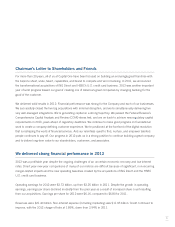 2
2 -
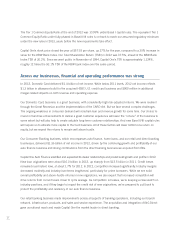 3
3 -
 4
4 -
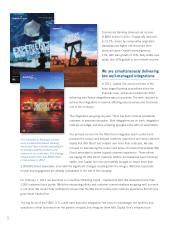 5
5 -
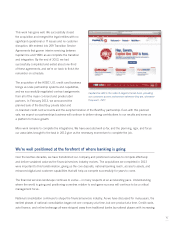 6
6 -
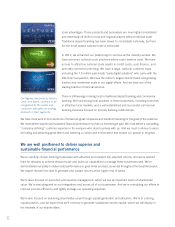 7
7 -
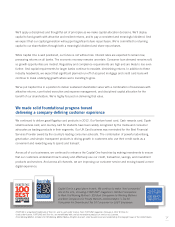 8
8 -
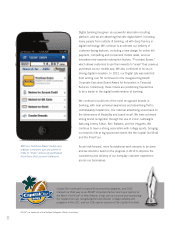 9
9 -
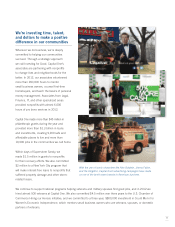 10
10 -
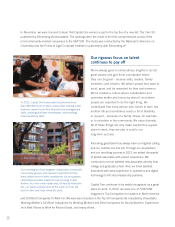 11
11 -
 12
12 -
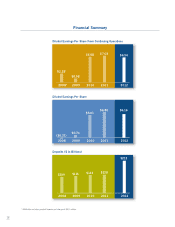 13
13 -
 14
14 -
 15
15 -
 16
16 -
 17
17 -
 18
18 -
 19
19 -
 20
20 -
 21
21 -
 22
22 -
 23
23 -
 24
24 -
 25
25 -
 26
26 -
 27
27 -
 28
28 -
 29
29 -
 30
30 -
 31
31 -
 32
32 -
 33
33 -
 34
34 -
 35
35 -
 36
36 -
 37
37 -
 38
38 -
 39
39 -
 40
40 -
 41
41 -
 42
42 -
 43
43 -
 44
44 -
 45
45 -
 46
46 -
 47
47 -
 48
48 -
 49
49 -
 50
50 -
 51
51 -
 52
52 -
 53
53 -
 54
54 -
 55
55 -
 56
56 -
 57
57 -
 58
58 -
 59
59 -
 60
60 -
 61
61 -
 62
62 -
 63
63 -
 64
64 -
 65
65 -
 66
66 -
 67
67 -
 68
68 -
 69
69 -
 70
70 -
 71
71 -
 72
72 -
 73
73 -
 74
74 -
 75
75 -
 76
76 -
 77
77 -
 78
78 -
 79
79 -
 80
80 -
 81
81 -
 82
82 -
 83
83 -
 84
84 -
 85
85 -
 86
86 -
 87
87 -
 88
88 -
 89
89 -
 90
90 -
 91
91 -
 92
92 -
 93
93 -
 94
94 -
 95
95 -
 96
96 -
 97
97 -
 98
98 -
 99
99 -
 100
100 -
 101
101 -
 102
102 -
 103
103 -
 104
104 -
 105
105 -
 106
106 -
 107
107 -
 108
108 -
 109
109 -
 110
110 -
 111
111 -
 112
112 -
 113
113 -
 114
114 -
 115
115 -
 116
116 -
 117
117 -
 118
118 -
 119
119 -
 120
120 -
 121
121 -
 122
122 -
 123
123 -
 124
124 -
 125
125 -
 126
126 -
 127
127 -
 128
128 -
 129
129 -
 130
130 -
 131
131 -
 132
132 -
 133
133 -
 134
134 -
 135
135 -
 136
136 -
 137
137 -
 138
138 -
 139
139 -
 140
140 -
 141
141 -
 142
142 -
 143
143 -
 144
144 -
 145
145 -
 146
146 -
 147
147 -
 148
148 -
 149
149 -
 150
150 -
 151
151 -
 152
152 -
 153
153 -
 154
154 -
 155
155 -
 156
156 -
 157
157 -
 158
158 -
 159
159 -
 160
160 -
 161
161 -
 162
162 -
 163
163 -
 164
164 -
 165
165 -
 166
166 -
 167
167 -
 168
168 -
 169
169 -
 170
170 -
 171
171 -
 172
172 -
 173
173 -
 174
174 -
 175
175 -
 176
176 -
 177
177 -
 178
178 -
 179
179 -
 180
180 -
 181
181 -
 182
182 -
 183
183 -
 184
184 -
 185
185 -
 186
186 -
 187
187 -
 188
188 -
 189
189 -
 190
190 -
 191
191 -
 192
192 -
 193
193 -
 194
194 -
 195
195 -
 196
196 -
 197
197 -
 198
198 -
 199
199 -
 200
200 -
 201
201 -
 202
202 -
 203
203 -
 204
204 -
 205
205 -
 206
206 -
 207
207 -
 208
208 -
 209
209 -
 210
210 -
 211
211 -
 212
212 -
 213
213 -
 214
214 -
 215
215 -
 216
216 -
 217
217 -
 218
218 -
 219
219 -
 220
220 -
 221
221 -
 222
222 -
 223
223 -
 224
224 -
 225
225 -
 226
226 -
 227
227 -
 228
228 -
 229
229 -
 230
230 -
 231
231 -
 232
232 -
 233
233 -
 234
234 -
 235
235 -
 236
236 -
 237
237 -
 238
238 -
 239
239 -
 240
240 -
 241
241 -
 242
242 -
 243
243 -
 244
244 -
 245
245 -
 246
246 -
 247
247 -
 248
248 -
 249
249 -
 250
250 -
 251
251 -
 252
252 -
 253
253 -
 254
254 -
 255
255 -
 256
256 -
 257
257 -
 258
258 -
 259
259 -
 260
260 -
 261
261 -
 262
262 -
 263
263 -
 264
264 -
 265
265 -
 266
266 -
 267
267 -
 268
268 -
 269
269 -
 270
270 -
 271
271 -
 272
272 -
 273
273 -
 274
274 -
 275
275 -
 276
276 -
 277
277 -
 278
278 -
 279
279 -
 280
280 -
 281
281 -
 282
282 -
 283
283 -
 284
284 -
 285
285 -
 286
286 -
 287
287 -
 288
288 -
 289
289 -
 290
290 -
 291
291 -
 292
292 -
 293
293 -
 294
294 -
 295
295 -
 296
296 -
 297
297 -
 298
298 -
 299
299 -
 300
300 -
 301
301 -
 302
302 -
 303
303 -
 304
304 -
 305
305 -
 306
306 -
 307
307 -
 308
308 -
 309
309 -
 310
310 -
 311
311
 |
 |

2
The Tier 1 Common Equity Ratio at the end of 2012 was 10.99% under Basel I capital rules. The equivalent Tier 1
Common Equity Ratio under fully phased-in Basel II/III rules is on track to reach our assumed regulatory minimum
under the new rules in 2013, years before the new requirements take effect.
Capital One’s stock price closed the year at $57.93 per share, up 37% for the year, compared to a 30% increase in
value for the KBW Bank Index. Our Total Shareholder Return (TSR) in 2012 was 37.5%, ahead of the KBW Bank
Index TSR of 30.2%. Since we went public in November of 1994, Capital One’s TSR is approximately 1,134%,
roughly 12 times the 93.1% TSR of the KBW bank index over the same period.
Across our businesses, financial and operating performance was strong
In 2012, Domestic Card delivered $1.4 billion of net income. While below 2011 levels, 2012 net income reflects
$1.3 billion in allowance build for the acquired HSBC U.S. credit card business and $900 million in additional
merger-related impacts on both revenue and operating expense.
Our Domestic Card business is a great business, with consistently high risk-adjusted returns. We were resilient
through the Great Recession and the implementation of the CARD Act. But we face several complex challenges.
The ongoing weakness in consumer demand will constrain loan and revenue growth for some time. Our choice to
invest in franchise enhancements to deliver a great customer experience will lower the “octane” of the business to
some extent but will also help to create valuable long-term customer relationships. And new Basel II/III capital rules
will require us to allocate more capital to the Card business. All of these factors will lower bottom-line return on
equity, but we expect the returns to remain well above hurdle.
Our Consumer Banking business, which encompasses auto finance, home loans, and our retail and direct banking
businesses, delivered $1.36 billion of net income in 2012, driven by the continuing growth and profitability of our
auto finance business and strong contributions from the direct banking business we acquired from ING.
Capital One Auto Finance solidified and expanded its dealer relationships and posted solid growth and profits in 2012.
New loan originations were about $16.0 billion in 2012, up sharply from $12.5 billion in 2011. Credit losses
remained near historic lows, at about 1.7% for 2012. In 2012, competition increased significantly. Industry margins
decreased modestly and industry loan terms lengthened, particularly for prime borrowers. While we see solid
overall profitability and above-hurdle returns in new originations, we also expect that increased competition will
drive returns from current levels closer to cycle average. As competition increases, we’re keeping a close watch on
industry practices, and if they begin to impact the credit risk of new originations, we’re prepared to pull back to
protect the profitability and resiliency of our auto finance business.
Our retail banking business made improvements across all aspects of banking operations, including our branch
network, infrastructure, products, and sales and service experience. The acquisition and integration of ING Direct
gave us national reach and made Capital One the market leader in direct banking.
